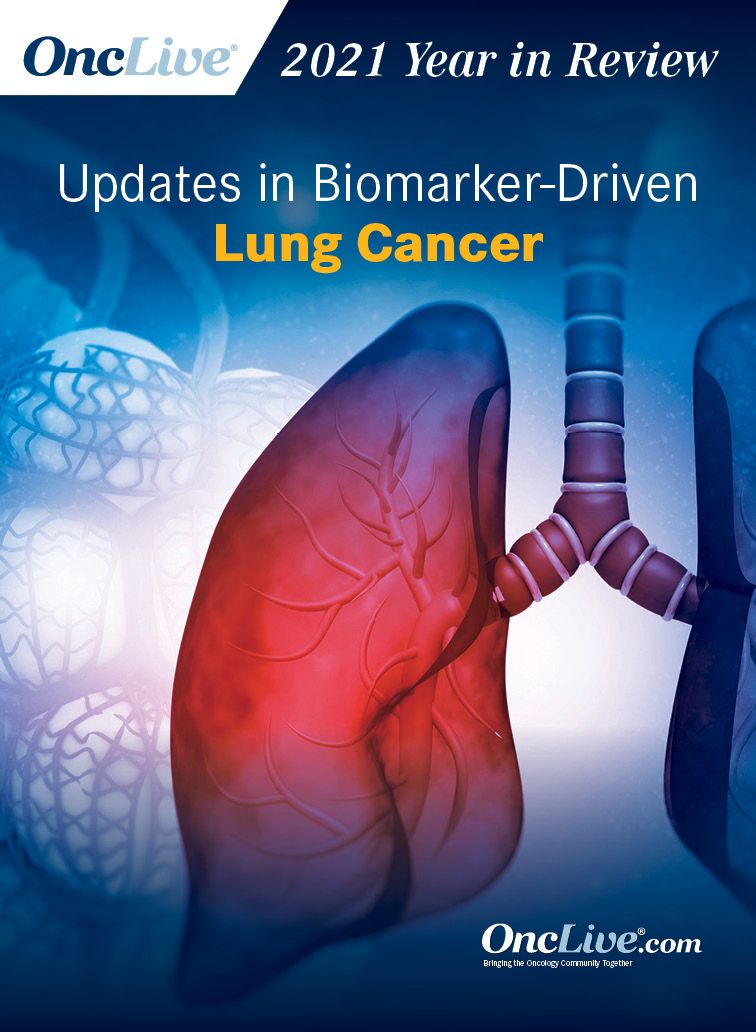Publication
Article
Supplements and Featured Publications
Navigating the Nuances of Molecular Testing in NSCLC
Author(s):
Charu Aggarwal, MD, MPH, shares how to navigate the nuances of molecular testing in non–small cell lung cancer, key developments made in the treatment of those whose tumors harbor actionable mutations, and the role of PD-L1 expression in informing clinical decisions.
Charu Aggarwal, MD, MPH

Molecular testing is a critical component of care for patients with non–small cell lung cancer (NSCLC), according to Charu Aggarwal, MD, MPH, who added that novel combination strategies are under exploration for those whose tumors harbor actionable alterations and the role of PD-L1 expression has become more pronounced in that this marker is being utilized to guide clinical decisions irrespective of mutational status.
“Molecular testing in NSCLC is of paramount importance,” Aggarwal said. “Not only do we need to test for actionable mutations, but we also need to test for PD-L1 expression.”
In an interview with OncLive®, Aggarwal, the Leslye M. Heisler associate professor for Lung Cancer Excellence at the University of Pennsylvania, shared how to navigate the nuances of molecular testing in non–small cell lung cancer, key developments made in the treatment of those whose tumors harbor actionable mutations, and the role of PD-L1 expression in informing clinical decisions.
OncLive®: How is PD-L1 expression being used to guide treatment selection in the presence and absence of other molecular markers for patients with NSCLC?
Aggarwal: Unlike other cancers, [PD-L1 status] still helps us decide which patients can receive immunotherapy alone vs those who should receive a combination of chemotherapy and immunotherapy. As such, this is a very relevant marker, and something that we must look at.
I often use [PD-L1 expression] in the setting of a [patient with a] wild-type genotype in case there is no actionable mutation. Additionally, I look at the level [of expression], whether it is negative, 1% to 49%, or greater than 50%, to make a treatment selection.
What are some of the nuances of molecular testing?
The gold standard for molecular testing is tissue-based, next-generation sequencing [NGS]. However, we must not forget that we now have a minimally invasive way to sequence tumors, using plasma-based NGS. We do know that complementary sequencing, using both liquid- and tissue-based NGS approaches, can give us a better yield. We can also use concurrent approaches.
We need to remember that this is a quality measure; this [testing] is something that everyone with a diagnosis of stage IV NSCLC—especially those with nonsquamous histology—must undergo.
Do you foresee the utilization of single-agent targeted therapies evolving to novel combination strategies, for example, in those with EGFR-mutant disease?
The field for EGFR-mutant NSCLC is [evolving] very rapidly. Although we are used to using single-agent osimertinib [Tagrisso], and we know that it is associated with a survival benefit, in the future, we will be able to build upon [the efficacy achieved with] this therapy [by pairing it] with other novel agents. Hopefully, [by doing this,] we can delay progression, as well as improve survival [in our patients].
How do you foresee the data with co-occurring mutations playing out? Could this information be compelling enough to drive treatment decisions, for example, in those with KRAS G12C–mutant disease?
The data with co-occurring mutations are still evolving. We do know that [patients with] genomically complex tumors tend to experience a worse outcome, be it in terms of progression-free survival [PFS] or overall survival [OS]. New data are also [shedding light on] how novel TKIs may [be leveraged] in the presence or absence of STK11 mutations. We need larger numbers; I want to wait for larger studies to read out before we start [applying] that to clinical practice.
Should repeat testing be routine in a patient who progresses on frontline therapy?
This is a question that I am asked very frequently. Should routine testing or sequencing be performed in the case of disease progression? This should be the case for patients who are currently on a targeted therapy. However, if they are not on a targeted therapy, and we have already established that they do not have an actionable mutation, it is probably not a worthwhile exercise.
What are some of the data that have been reported with anti-TIGIT agents?
Anti-TIGIT [monoclonal] antibodies are very interesting, and we look forward to [seeing] new data that will be emerging [in this space]. We have already seen preliminary data [with these agents] in patients with high PD-L1–expressing NSCLCs who do not harbor an actionable mutation. Using an anti-TIGIT antibody in combination with a PD-1 agent may increase response rates [in these patients]. How this [approach] will play out in terms of PFS and OS [benefit] remains to be seen.

Latest Conference Coverage

Zongertinib Elicits Durable Responses in Pretreated Advanced HER2-Mutant NSCLC

Lenvatinib Shows Efficacy in Advanced HCC Post-Progression on Atezolizumab/Bevacizumab

Sacituzumab Govitecan Does Not Significantly Improve OS in Pretreated Urothelial Carcinoma

Active Monitoring Is Noninferior to Guideline Concordant Care in Low-Risk DCIS
2 Commerce Drive
Cranbury, NJ 08512





